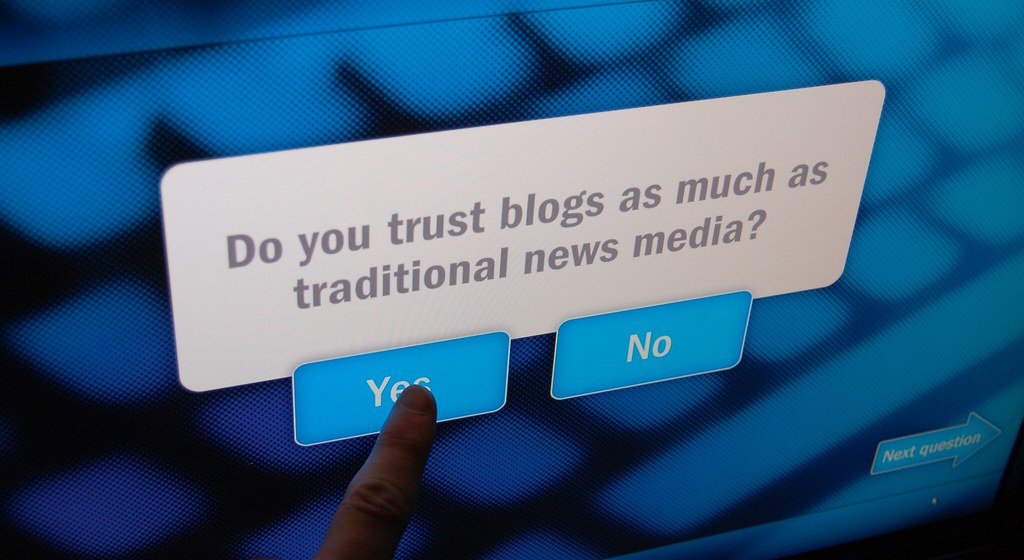Are you tired of spending hours brainstorming, researching, and writing blog posts only to see little engagement and traffic? Do you wish there was a way to streamline the content creation process without sacrificing quality? Well, what if I told you that there’s a revolutionary new technology that can help with just that? That’s right, AI-powered blog posts are taking the blogging world by storm. But what exactly are they and how do they work? Join us as we dive into the world of AI-powered content creation and discover how it could change the way we approach blogging forever.

Introduction: The Future of Blogging with AI-Powered Content Creation
The world of blogging is constantly evolving, and now, with the help of AI-powered content creation, it’s reaching new heights. AI to write blog posts has become a popular topic in the digital marketing space, and for good reason. It allows businesses to generate high-quality articles in large quantities and in a shorter time frame than ever before. This not only saves valuable resources but also frees up time for bloggers to focus on other crucial aspects of their strategy.
Using artificial intelligence for writing might sound like science fiction, but it’s a reality that many companies are already embracing. As more industries continue to harness this technology’s capabilities, experts predict that automated content production will become standard practice across all sectors. In this article series we explore how AI can revolutionize your approach to blogging by exploring its benefits, misconceptions while providing best practices on how you can incorporate AI into your workflow seamlessly.
Understanding How AI Writes Blog Posts
Artificial intelligence (AI) is rapidly transforming the way we create content, including blog posts. Machine learning algorithms are used to analyze vast amounts of data and generate high-quality articles that are both informative and engaging. These algorithms can identify patterns in existing content and use them to create new pieces that are optimized for search engines and tailored to specific audiences.
AI-generated articles can be customized based on factors such as tone, style, and length, making them ideal for a wide range of industries and niches. They can also be produced quickly and efficiently, freeing up time for writers to focus on other tasks. However, it’s important to note that AI-generated content is not a replacement for human writers. Natural language processing allows AI to write convincingly, but it lacks the creativity and nuance that only a human writer can provide. Instead, AI should be viewed as a tool that can enhance the writing process and help writers produce higher-quality content more efficiently.

Benefits of Using AI for Creating Blog Content
Using AI for creating blog content offers numerous benefits for bloggers and content creators. Firstly, it saves time and effort as AI algorithms can generate articles in a matter of minutes. This allows writers to focus on other important tasks such as research, promotion, and engagement with their audience. Secondly, AI-generated content is highly accurate and precise as it is based on data-driven insights and analysis. This means that the articles are more likely to be informative, engaging, and relevant to the target audience. Thirdly, AI can help writers identify gaps in their content strategy by analyzing user behavior and preferences. This enables them to create more personalized and targeted content that resonates with their readers. Overall, incorporating AI into your writing strategy can help you create high-quality content at scale while freeing up your time for other important tasks.
Common Misconceptions About AI-Generated Articles
As with any new technology, there are often misconceptions and myths surrounding AI-generated articles. One common misconception is that AI completely replaces human writers. In reality, AI is simply a tool that can assist writers in creating content more efficiently.
Another misconception is that AI-generated articles lack creativity and originality. However, with advancements in natural language processing, AI can now produce unique and engaging content that is on par with human-written articles.
Some people also believe that AI-generated articles are not SEO-friendly. This is not true as AI can be programmed to incorporate relevant keywords and phrases into the content.
Lastly, there is a fear that AI-generated articles will put human writers out of work. However, while AI can automate certain aspects of content creation, it cannot replace the creativity and personal touch that human writers bring to their work. Instead, it allows writers to focus on higher-level tasks such as strategy and analysis.
Factors to Consider When Incorporating AI in Your Writing Strategy
When considering incorporating AI into your writing strategy, there are several factors to keep in mind. First and foremost, understand the limitations of AI-generated content. While AI can produce high-quality articles, it still lacks the creativity and personal touch that human writers bring to the table. Therefore, it’s important to strike a balance between using AI for efficiency and incorporating human input for authenticity.
Another important factor is choosing the right AI tool for your needs. There are many different AI-powered content creation tools available, each with their own strengths and weaknesses. Consider factors such as cost, ease of use, and customization options when selecting a tool.
It’s also crucial to train your AI tool properly. This involves providing it with clear guidelines and examples of the type of content you want it to produce. The more specific and detailed your instructions are, the better results you’ll get.
Finally, don’t forget about quality control. Even with a well-trained AI tool, it’s important to have a human editor review and polish the final product. This ensures that the article is error-free and meets your brand’s standards for tone and style.

How to Implement and Integrate AI into Your Blogging Workflow
Implementing and integrating AI into your blogging workflow can be a game-changer for your content creation process. Firstly, it’s important to identify the areas where AI can be most useful, such as generating topic ideas, researching keywords, and even writing drafts. Secondly, you’ll need to choose the right AI tool for your needs and budget. Some popular options include GPT-3, Articoolo, and Wordsmith. Once you’ve selected an AI tool, it’s important to train it on your brand voice and style to ensure that the content it generates aligns with your brand’s tone. It’s also important to set clear guidelines for the AI-generated content, such as word count, target audience, and SEO keywords. Finally, it’s crucial to have a human editor review and polish the AI-generated content before publishing to ensure that it meets your quality standards and resonates with your audience.

Tips and Best Practices for Editing and Polishing an AI-Generated Article
Understanding the Basics of AI-Generated Content
AI-generated content is created using various algorithms and natural language processing techniques to imitate human writing. The main objective of incorporating an AI tool in your writing workflow is to ease the burden of mundane tasks such as researching, fact-checking, and even generating ideas. It’s important to note that while AI tools can help you generate blog posts quickly and efficiently, they are not a replacement for human creativity or expertise.
To get started with using AI in your content creation strategy, it’s crucial to understand how the tool works, what kind of data sets it uses to generate articles, and its limitations. Additionally, you should be aware of the types of errors or inaccuracies that might arise when working with AI-generated content so that you can correct them during editing.
Tips for Editing and Polishing AI-Generated Blog Posts
When editing and polishing AI-generated blog posts, it’s important to keep in mind that the content is not perfect and may require some human touch. Start by checking for grammar and spelling errors using tools like Grammarly or Hemingway. Then, read through the article to ensure that it flows well and makes sense. Look for opportunities to add your own personal touch or insights to the piece, which can help make it more engaging for readers. Finally, optimize the post for SEO by including relevant keywords and meta descriptions. By following these tips, you can ensure that your AI-generated blog posts are high-quality and effective in driving traffic to your website.
How to Add a Personal Touch to AI-Generated Articles
One of the key advantages of incorporating AI to write blog posts is its ability to produce high-quality content quickly. However, some may argue that AI-generated articles lack a personal touch that only humans can provide. To add a human element to your AI-generated articles, consider adding anecdotes or personal experiences relevant to the topic at hand. Another way is to use inclusive language and address the reader directly throughout the article. These simple touches can make a huge difference in engaging readers and keeping them hooked on your content.
The Role of Human Editors in AI-Powered Content Creation
The Role of Human Editors in AI-Powered Content Creation cannot be underestimated. Although AI can produce well-written articles quickly and efficiently, there are still areas where a machine cannot match a human’s abilities. This is where the skills of an experienced editor come into play. With their expertise, an editor can enhance an AI-generated article to make it more engaging and polished, while ensuring that it meets the standards set by the brand or publication. Further, editors can also add a personal touch to these articles so they connect with readers on a more emotional level. Overall, human editing ensures that top-quality content is produced every time AI generates an article for your blog or website.

Examples of Top Companies That Already Use or Plan on Using Automated Content Creation Tools
How Forbes and The Washington Post are Using AI to Optimize Their Content Creation Process
Forbes and The Washington Post have both implemented AI-powered content creation tools to optimize their writing processes. Forbes, for instance, uses a platform called Bertie to recommend article topics based on data gathered from reader behavior on their website. This has enabled them to create articles that are relevant and more likely to be read by their audience. On the other hand, The Washington Post has integrated Heliograf, an AI tool that generates simple news reports in real-time during significant events such as sports games or political conventions. By utilizing these tools, both companies can produce high-quality content faster and with less human effort, freeing up writers’ time for more complex projects.
How HubSpot is Using Automated Blog Posts to Increase Website Traffic
HubSpot, a leading inbound marketing and sales software company, has been using AI-powered blog posts to increase website traffic and engagement. By leveraging machine learning algorithms, HubSpot’s automated content creation tool can analyze data from millions of online sources to generate high-quality blog posts that are optimized for search engines and tailored to their target audience. The tool also allows for customization of the tone, style, and structure of the articles to match the brand’s voice and messaging. As a result, HubSpot has seen a significant increase in organic traffic and engagement on their blog, allowing them to focus on other important aspects of their business.
Why Buzzfeed and CNN Are Embracing AI Technology for their News Articles
Buzzfeed and CNN are among the top companies that have embraced AI technology for their news articles. Buzzfeed’s “Pulse” tool uses AI to analyze data and generate article ideas, while CNN’s “Article Insights” tool uses AI to suggest article topics and optimize headlines. Both companies have reported significant improvements in their content creation process, with faster turnaround times and increased engagement from readers. By leveraging the power of AI, these companies are able to produce high-quality content at a faster pace, allowing them to stay ahead of the competition in the ever-evolving world of online media.
The Future of Blogging: Can Artificial Intelligence Replace Human Creativity?
Artificial intelligence has already made its way into the world of content creation, with many top companies utilizing AI-powered tools to generate blog posts and other written content. Some of these companies include Forbes, which uses an AI tool called Bertie to assist in creating rough drafts of articles, and The Washington Post, which uses Heliograf to write short news stories. While some may argue that AI-generated content lacks the creativity and personal touch of human-written pieces, it’s clear that the technology is advancing rapidly and has the potential to revolutionize the way we approach writing and blogging.

Conclusion: The Game-Changing Role of Artificial Intelligence in the Future of Writing
Artificial Intelligence (AI) is already revolutionizing the way we create content, particularly in the field of blogging. With its ability to generate high-quality articles quickly and efficiently, AI-powered writing tools are becoming essential for businesses looking to improve their online presence. As these technologies continue to develop, the role of human writers may shift from creating large volumes of low-quality content to crafting more thoughtful pieces that require creativity and critical thinking.
However, it’s important not to overlook the potential pitfalls of relying too heavily on automation. While AI can certainly increase productivity and streamline workflows, it isn’t a substitute for the unique perspectives humans bring when creating content. Successful integration of AI requires finding the right balance between technology and human expertise.
Ultimately, as companies continue searching for ways to stay ahead in an increasingly competitive digital landscape, incorporating intelligent automation into your writing strategy will be key. It has never been more important to embrace new technologies like AI-generated content creation if you want to stay relevant and achieve success online.
In conclusion, AI-powered content creation is revolutionizing the way we approach blogging. With its ability to generate high-quality articles quickly and efficiently, it’s no wonder that more and more companies are incorporating this technology into their writing strategies. However, it’s important to understand the limitations and considerations when using AI for content creation. By following best practices for editing and polishing an AI-generated article, you can ensure that your content is both informative and engaging for your readers. If you’re interested in learning more about the latest trends in blogging and content creation, be sure to check out our other articles on the topic. Happy writing!
